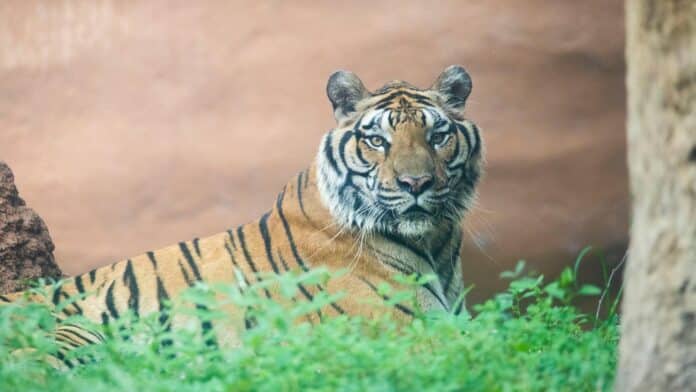
It is a very sad day at the Gladys Porter Zoo due to the passing of Noj, a 13-year-old tiger that was euthanized after being under intense medical care for three years.
The zoo said Noj was humanely euthanized on Wednesday due to the thyroid and pancreatic insufficiencies he went through for the past years. He grew up in the zoo along with his sister Hobbs and unrelated best friend Neb.
“We worked closely with the vet staff in developing his diet and watching him very closely. Monitoring his quality of life and how he was doing,” Mark Echevarria, associate curator of gorillas and carnivores, said during an interview.
“He slowly started to deteriorate, so conferring with the animal care and veterinarian staff, we made the difficult decision that his quality of life was at a point where it was more humane to euthanize than to move forward.”
For the past three years, Noj was given a special diet, thyroid supplements, pancreatic enzymes and B vitamins to help him better metabolize his food. Until recently, he responded well to his keepers and was possessive over his food.
“He was just an amazing, special tiger. He was great and anybody who met him, or worked with him, immediate fell in love with him,” Echevarria said.
Since in the wild for the most part tigers are solitary animals, the zoo decided that at this point and time they will not be adding more tigers to the exhibit and will just keep the two they currently have.
Echevarria said the reason why these three tigers were together all the time was because they grew up together and created a bond. A typical day includes checking on them in the morning, fix up the exhibit, clean the pool, put enrichment out for them so they can get mental and physical stimulation and go out for trainings.
“We put up enrichment for them, which is anything that stimulates them mentally or physically. It might be a ball, they like big boomer balls, or they like scents too, so we would spray different scents throughout the exhibit and things like that,” he said.
“Then, we’ll do training session in the morning and then let them out in the exhibit. Sometimes during the day we will bring them back into another training session and put different enrichment out there.”
Echevarria said he encourages everyone to visit the zoo and experience all of the animals because they’re ambassadors for their relatives that are out there in the wild.
He said seeing the animals up close does not even compare to reading about them or seeing them on television and on videos.
“Seeing them up close and personal you get that connection with them,” Echevarria said.
“And, that’s one of the wonderful things about Noj. We had people, members here, that had been coming for years and felt like they knew Noj. And they did, and they are grieving just like we are.”



